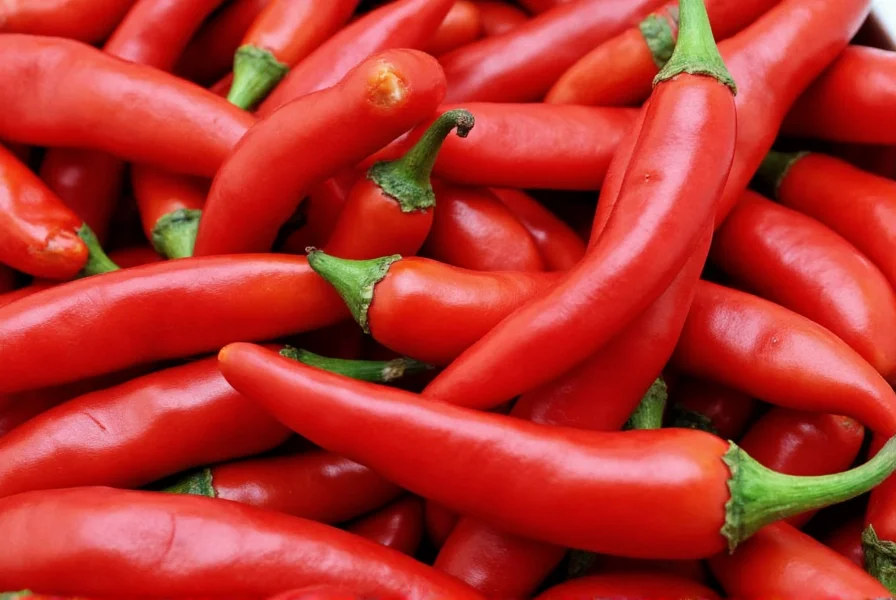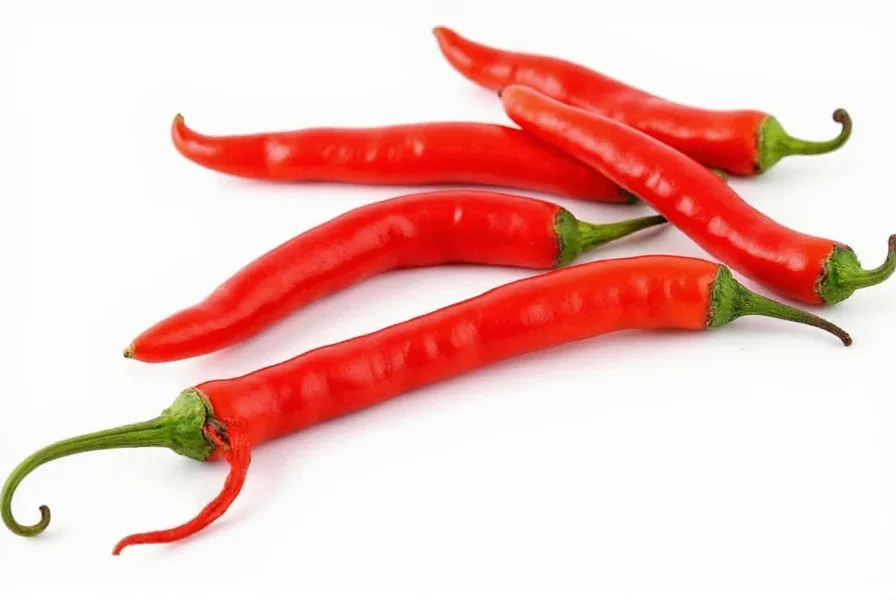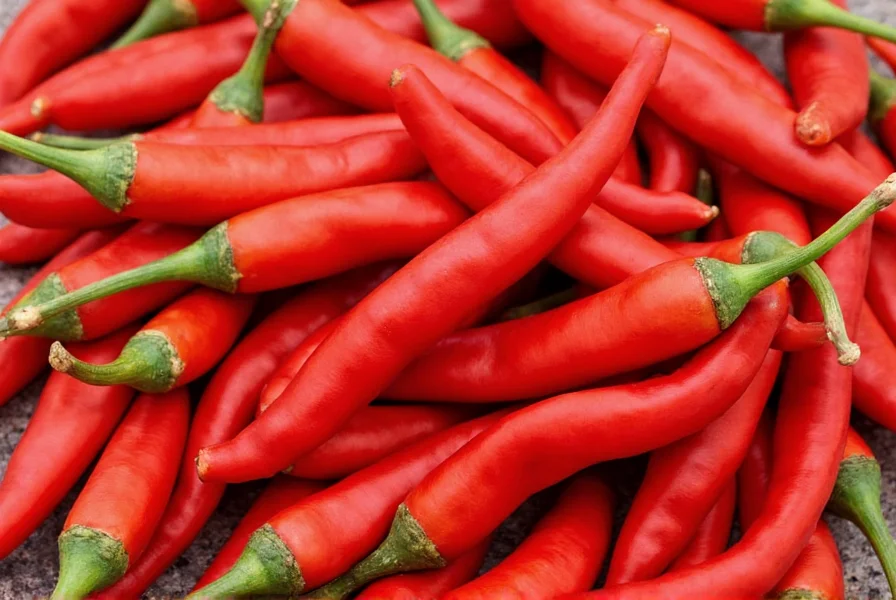Cayenne pepper (Capsicum annuum) has been valued for centuries not just as a culinary spice but as a powerful natural remedy. This vibrant red pepper contains capsaicin, the compound responsible for its heat and most of its scientifically validated health benefits. Understanding what cayenne pepper is good for requires examining both traditional uses and modern research findings.
The Science Behind Cayenne Pepper's Benefits
At the heart of cayenne pepper's effectiveness is capsaicin, which interacts with TRPV1 receptors in our bodies. These receptors, often called "vanilloid receptors," play key roles in pain perception, temperature regulation, and inflammation response. When capsaicin binds to these receptors, it triggers various physiological responses that explain many of cayenne pepper's health benefits.
| Benefit Category | Key Compounds | Scientific Evidence Level |
|---|---|---|
| Pain Relief | Capsaicin (0.025%-0.075%) | Strong clinical evidence |
| Metabolism Boost | Capsaicin, dihydrocapsaicin | Moderate clinical evidence |
| Cardiovascular Support | Capsaicin, flavonoids | Promising preliminary research |
| Digestive Health | Capsaicin, vitamins A & C | Traditional use with emerging evidence |
Culinary Applications of Cayenne Pepper
Beyond its health properties, cayenne pepper serves as a versatile culinary ingredient. Chefs worldwide use it to add depth and heat to dishes without overwhelming other flavors. Unlike some hot peppers that deliver immediate intense heat, cayenne provides a more gradual warmth that enhances rather than dominates.
When cooking with cayenne pepper, remember that a little goes a long way. Start with 1/8 teaspoon for a standard recipe serving four people, then adjust to taste. The pepper's heat compounds are fat-soluble, so incorporating it with oils or fats helps distribute the flavor evenly throughout dishes. What are the culinary benefits of cayenne pepper? It enhances flavor complexity, balances rich foods, and can even reduce the need for salt in recipes.

Top Evidence-Based Health Benefits
Natural Pain Management
One of the most well-documented uses of cayenne pepper is for pain relief. Topical capsaicin creams (containing 0.025%-0.075% capsaicin) have received FDA approval for managing pain associated with osteoarthritis, neuropathy, and post-herpetic neuralgia. Research published in the Journal of Clinical Rheumatology found that regular application of capsaicin cream significantly reduced pain scores in patients with chronic musculoskeletal pain.
The mechanism works through "defunctionalization" of pain-transmitting nerve fibers. With repeated application, capsaicin temporarily reduces the substance P neurotransmitter responsible for sending pain signals to the brain. This makes cayenne pepper particularly good for managing chronic pain conditions when used consistently.
Metabolism and Weight Management Support
Studies suggest that cayenne pepper can modestly increase metabolic rate and reduce appetite. A 2017 review in Chemical Senses reported that capsaicin consumption increased energy expenditure by approximately 50 calories per day and reduced calorie intake at subsequent meals. While not a magic solution for weight loss, incorporating cayenne pepper into a balanced diet may provide a small metabolic advantage.
How does cayenne pepper boost metabolism? The thermogenic effect occurs because your body works harder to process the capsaicin, temporarily increasing calorie burning. This effect appears most pronounced in individuals who don't regularly consume spicy foods.
Cardiovascular Health Benefits
Emerging research indicates cayenne pepper may support heart health through multiple pathways. Studies show capsaicin may help lower blood pressure by promoting vasodilation (widening of blood vessels) and improving circulation. Research in the Journal of Agricultural and Food Chemistry demonstrated that capsaicin activates potassium channels in blood vessels, which helps regulate blood pressure.
Additionally, cayenne pepper appears to have antiplatelet properties, potentially reducing the risk of blood clots. While more human studies are needed, traditional use and preliminary research suggest regular consumption of moderate amounts may contribute to cardiovascular wellness.
Digestive System Support
Contrary to what some might expect, cayenne pepper can actually benefit digestive health. Research published in Alimentary Pharmacology & Therapeutics found that capsaicin may help protect against stomach ulcers by stimulating mucus production and improving blood flow to the stomach lining.
Is cayenne pepper good for digestion? Evidence suggests it may stimulate digestive enzyme production, improve gut motility, and even have antimicrobial properties that support a healthy gut microbiome. Many traditional medicine systems have used cayenne pepper to address indigestion and sluggish digestion.
Practical Ways to Use Cayenne Pepper
Incorporating cayenne pepper into your daily routine doesn't require dramatic changes. Here are evidence-based usage recommendations:
- For pain relief: Apply topical creams containing 0.025%-0.075% capsaicin to affected areas 3-4 times daily
- For metabolism support: Add 1/8 to 1/4 teaspoon to morning beverages or meals
- For digestive health: Mix 1/8 teaspoon in warm water with lemon juice before meals
- For circulation: Include in cooking 3-4 times weekly as part of a balanced diet

Safety Considerations and Potential Side Effects
While generally safe for most adults, cayenne pepper may cause side effects in some individuals. Common reactions include temporary burning sensation, stomach upset, or skin irritation. Those with gastrointestinal conditions like ulcers or GERD should consult a healthcare provider before regular consumption.
Important cautions for cayenne pepper use:
- Avoid contact with eyes and sensitive skin areas
- Start with small amounts to assess tolerance
- Discontinue use if severe gastrointestinal distress occurs
- Consult your doctor if taking blood thinners or blood pressure medications
- Pregnant and breastfeeding women should use moderate culinary amounts only
Maximizing Cayenne Pepper's Benefits
To get the most from cayenne pepper, consider these evidence-based tips:
- Pair with healthy fats like olive oil or avocado to improve capsaicin absorption
- Combine with black pepper to enhance bioavailability of beneficial compounds
- Use consistently rather than occasionally for cumulative benefits
- Choose high-quality organic cayenne pepper to avoid contaminants
- Store in a cool, dark place to preserve potency
Conclusion
Understanding what cayenne pepper is good for reveals its impressive versatility as both a culinary ingredient and natural remedy. From pain management to metabolic support, the evidence-based benefits of this humble spice make it worthy of consideration in your wellness routine. As with any natural remedy, consistency and appropriate usage are key to experiencing benefits without adverse effects. By incorporating cayenne pepper thoughtfully into your diet and lifestyle, you can harness its potential while enjoying its distinctive flavor.











 浙公网安备
33010002000092号
浙公网安备
33010002000092号 浙B2-20120091-4
浙B2-20120091-4